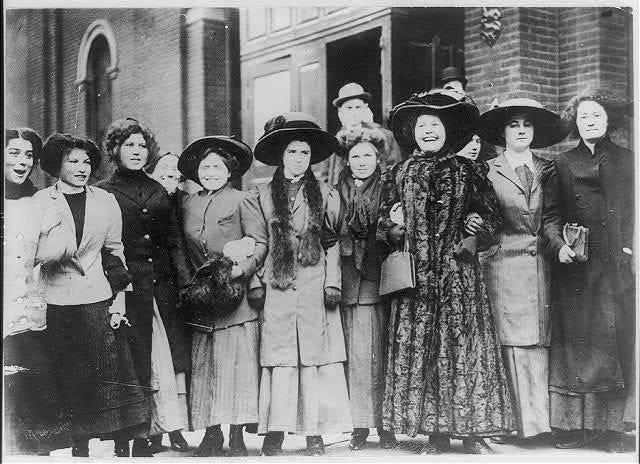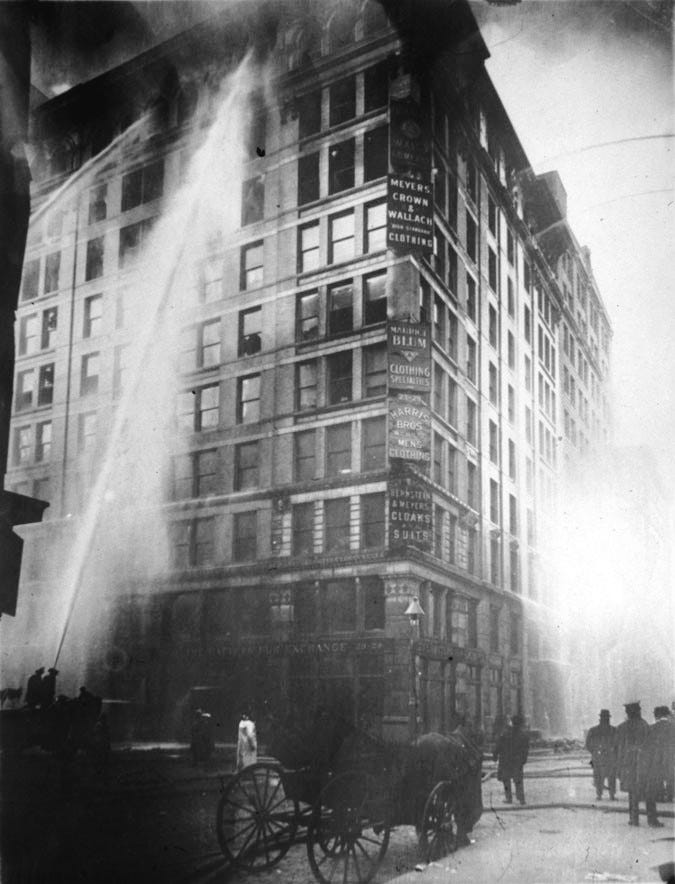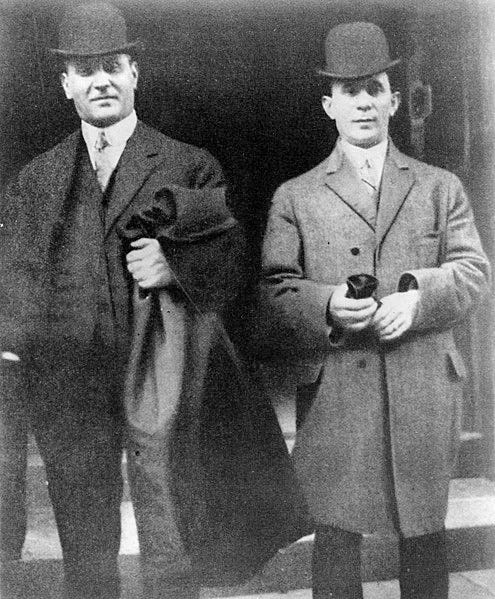The Triangle Shirtwaist Factory Fire of 1911: An Emigrant's Experience
This Friday, March 25th will mark the 112th anniversary of the Triangle Shirtwaist Factory fire, the deadliest industrial disaster in New York until 9/11.
Housed in a ten-story “highrise,” the Asch Building (today the Brown Building of New York University), the Triangle factory was one of the premier East Coast manufacturer’s of the shirtwaist or women’s blouse, a wardrobe staple for turn-of-the-century women from all walks of life. While the modern facility (the Asch building was completed in 1901) was touted as fireproof, the factory taking up its uppermost floors was far from it. Stuffed with bolts of highly flammable fabric and bits of cloth, in an era where smoking indoors was commonplace, the Triangle was as good as a tinderbox.
At 4:45 pm on Saturday, March 25, 1911, flames broke out on the Triangle’s eighth floor and quickly traveled upward through the ventilator shafts to engulf the ninth floor workroom and tenth floor offices. Within 30 minutes it was over, leaving 146 workers dead, most of them immigrant women and girls, and another 78 injured. Owner greed and neglience e.g., denying employees fire drills, blocking fire exits with sewing machines and other equipment, and locking in workers to prevent theft and unathorized breaks, greatly contributed to the high death toll.
Though the factory owners, Max Blanck and Isaac Harris, were acquitted of any wrongdoing in their lifetimes, the tragedy did much to galvanize the U.S. labor movement. Led by the International Ladies Garment Workers, public protests calling for reforms resulted in many of the “routine” worplace safety measures and rights we take for granted today, such as sprinkler systems, fire drills, and the eight-hour workday. (Typical of the time, Triangle employees worked Monday through Friday until 7pm and Saturday until 5 pm). More on that in Friday’s followup newsletter.
For now, I invite you to listen for free to my three-part podcast, "The Triangle Shirtwaist Factory Fire of 1911: An Emigrant's Experience," co-produced and cowritten with Irish historian, author and podcaster Fin Dwyer. Each approximately 30-minute episode looks at a different aspect of the fire as seen through the eyes of two immigrant factory workers who lived it: Annie Doherty, an Irish Catholic from the Finn Valley in Ireland's County Donegal and Celia Walker, an Eastern European Jew from Przemysl in southwestern Poland, in the late 19th century part of the Austro-Hungarian Empire. (Fun fact: I voice the two American women “characters” in the series).
Episode One follows Annie's and Celia's harrowing transatlantic journeys to turn-of-the-century New York where both women would make their home, Annie in the notorious West side neighborhood of Hell's Kitchen, Celia in the predominantly Eastern European Lower East Side.
Episode Two follows Annie and Celia from the citywide garment workers strike of 1909 to that fatal Saturday, March 25, 1911 when the fire broke out on the factory's eighth floor. Within 30-minutes, it would be over, leaving 146 dead and another 78 injured.
Episode Three takes Annie and Celia through the fire and its aftermath. One woman would disappear from the public record less than a decade later; the other would go on to achieve a modest version of the American Dream.
Sharing is Caring
Share this free post with other history lovers!
If you received this newsletter and aren’t yet subscribed, you can fix that here!
IRISH EYES, Book 1 of Hope’s new American Songbook series, spans twenty-five years of Gilded Age through the Jazz Age Manhattan, as seen through the eyes of spirited Irish-born Rose O’Neill. Read more here.






